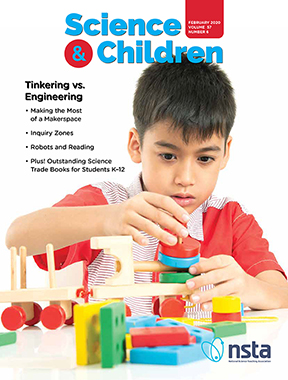Science and Children—February 2020

Volume 57, Number 6
We must give students opportunities to ask questions, try things out, and solve problems. It is less about the specific titles of “scientist,” “engineer,” or “tinkerer,” and more about encouraging students to think creatively as they design solutions. With less emphasis on procedures, more time can be allotted for developing the engineering habits of mind: creativity, optimism, systems thinking, collaboration, communication, and ethical considerations.
Journal Article
By Bill Lindquist, Bryna Wiens, Robyn Char, Leah Mark, and Joshua Baumgartner
Journal Article
In Flight With Paper Airplanes
By Laura Katchmark, Elisabeth McCabe, Kristen Matthews, and Michele Koomen
Journal Article
“Before completing this module, I had assumed that STEAM education was much more high-tech than it actually is. With this assumption in mind, I thought it would be difficult to bring STEAM into my Early Childhood Classroom. However, ...
By Lauren Angelone


